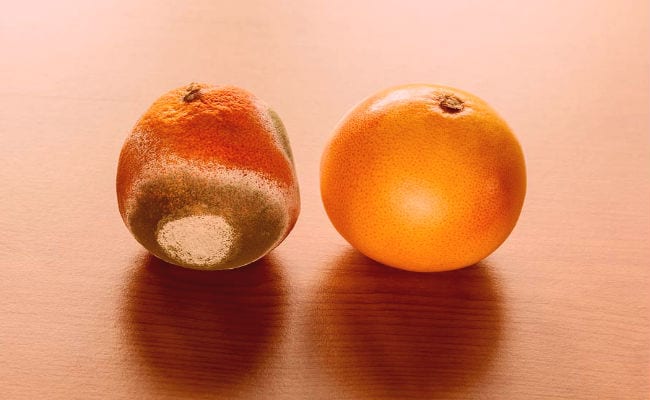DigitalThis constitutes a key term that determines the force of change that moves the evolution of processes, in which certain elements combine to give rise to new compounds. Before the variations observed in a system, it was used to resort to strict terms such as destruction and disappearance, but an irrefutable principle is that matter is not created, nor is it destroyed, it is transformed, And this means that when the absence of something is observed, this means that it became part of another compound.
Chemical changes involve the transformation of elements into new compounds, which despite being a combination of the original elements can present totally different properties. There are processes in which the transformation is reversible, that is, through mechanical manipulation we can separate and / or reverse the change to obtain the original elements (physical change), this is not the case of a chemical change, because the main Its characteristic is the irreversibility of the process, so the products obtained cannot be returned to their original elements.
Chemical change reactions

Every chemical reaction leads to a change of chemical type in which the reactant substances become new products through the change of the molecular structure, and the union of their bonds.
The determining principle in chemical processes is dictated by the law of conservation of mass de Lavoisier, which determines that the total mass, in the processes of chemical changes, remains unchanged, which means that the amount of mass consumed in the reactants must be reflected in the products.
The characteristics of the products obtained from chemical changes depend on different factors:
Number of atoms: The number of atoms present in each compound greatly influences the final product, as it determines the number of bonds and their nature, as well as directly influencing the molecular structure of the new compound. Considering by way of example that the element carbon with 2 valence atoms is reacting with oxygen (which occurs in bivalent form), the result of this reaction will be carbon monoxide (CO) which is a toxic gas. On the other hand, if we consider the same scenario, but this time we have the element carbon with a valence of 4, the result of the reaction will be carbon dioxide (CO2), which is a vital gas in processes such as photosynthesis and respiration.
Temperature: Many consider it the determining factor in the development of a reaction, since a certain amount of energy is required for the process to start. An increase in temperature translates into an increase in the speed of the reaction, regardless of whether it is exothermic or endothermic. This is because, as the temperature increases, the number of molecules with an energy equal to or greater than the activation energy increases, thereby increasing the number of effective collisions between atoms.
Attraction and repulsion force: It is a physical quantity, also known as electrical charge, that determines the forces that attract or repel compounds, considering their magnetic field. This determines the ability of matter to share photons.
Concentration: The concentration of the participating elements is a determining factor in the occurrence of a reaction, since the higher the concentration there is a greater probability of coalitions.
Characteristics of chemical changes
- They are irreversible, which means that once the reagents have been combined into new products, separation into their original components is impossible.
- The molecular structure of the participating species is modified by combining them.
- They require, and in turn can release energy.
- The total mass remains constant.
- A modification occurs in the characteristic properties of the material: melting, boiling point, solubility and density.
Indicators that a chemical change has occurred
In order to distinguish when we are in the presence of a chemical change, a series of factors that must be taken into consideration are listed below:
- Presence of sediment or precipitate: When two substances are mixed, we can distinguish that the reaction took place, if we notice the presence of a sediment, which means that some of the new substances formed are insoluble.
- Color change: Whether we add an indicator to the mixture, or if we only carry out the combination of reactant substances, it is common to observe a change in the initial color of the compound when chemical changes occur.
- Gas evolution: Many times in the products of the reactions we find gases that are released into the environment.
- Changes in basic properties: Another way to corroborate that a chemical change has occurred is by measuring properties such as acidity, odor, magnetic or electrical properties. A variation in them determines the formation of a new product.
- Heat absorption or release: Easily measurable as a spontaneous variation in the temperature of the mixture.
Examples
- The transformation of wood or paper into ash when subjected to a heat source.
- The digestion of food, in which complex elements are transformed into simpler forms, so that the body obtains the necessary nutrients.
- The mixture of the ingredients for making bread, and its subsequent cooking.
- The transformation of wine into vinegar.
- Fermentation of milk to produce yogurt.
- The transformation of oxygen into carbon dioxide, in the exchange produced in the blood in the pulmonary alveoli.
This article is very good, that I do have doubts because it seems to me that chemical changes in the formation of a chemical compound, contrary to what is said here, CAN be reversed, the water can be separated into H2 and 0 because I have read that in the In the future, this procedure will be used in vehicles, something similar will also happen with the photocatalyst system that will break down pollutants into their harmless components in cities.